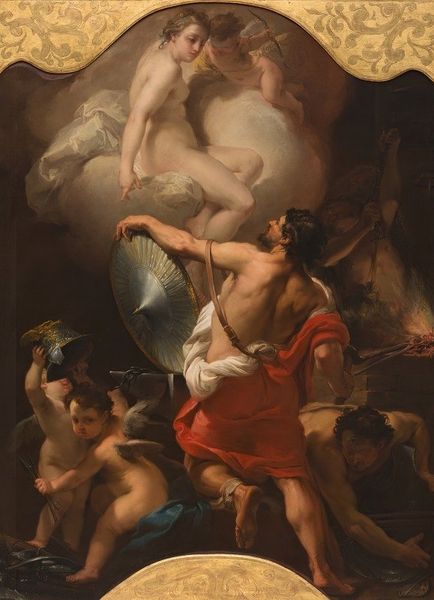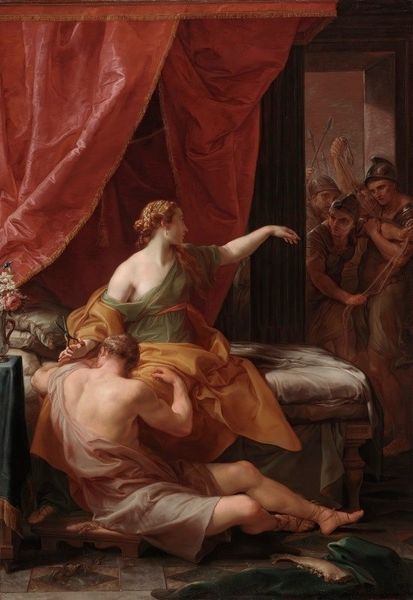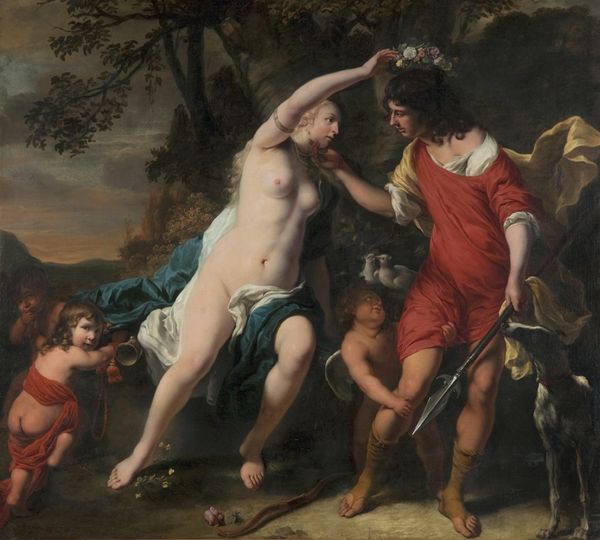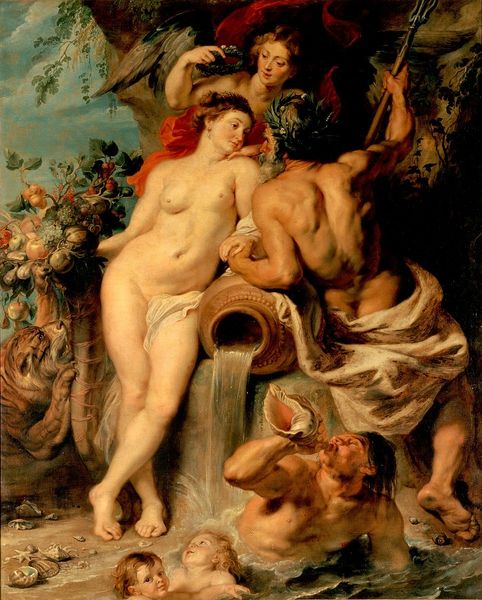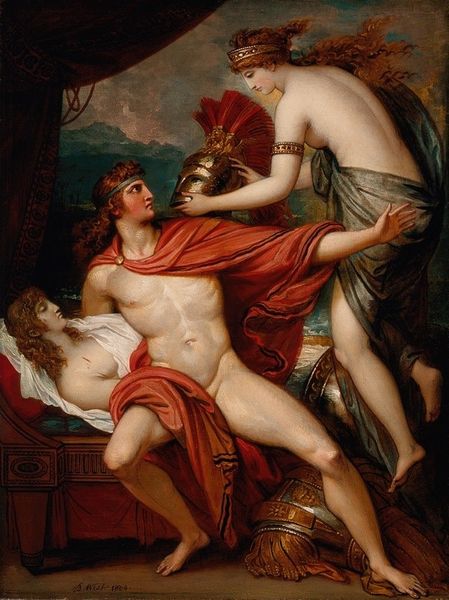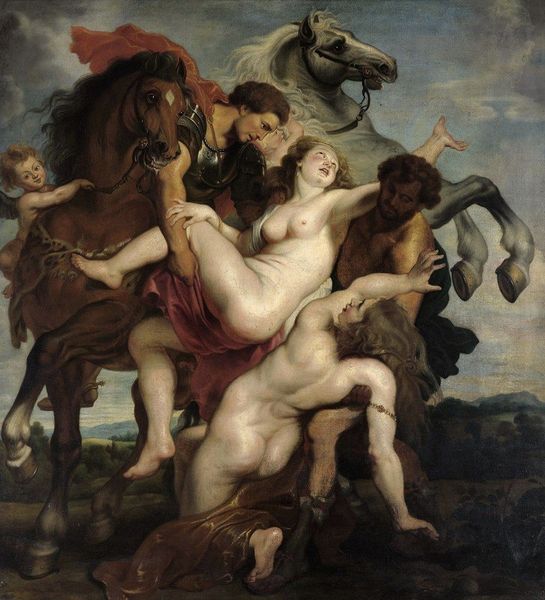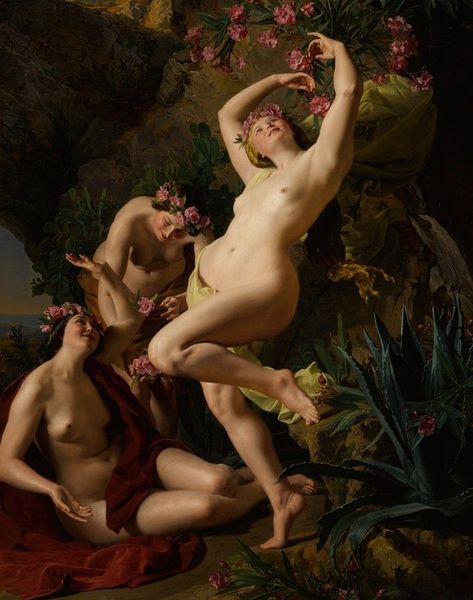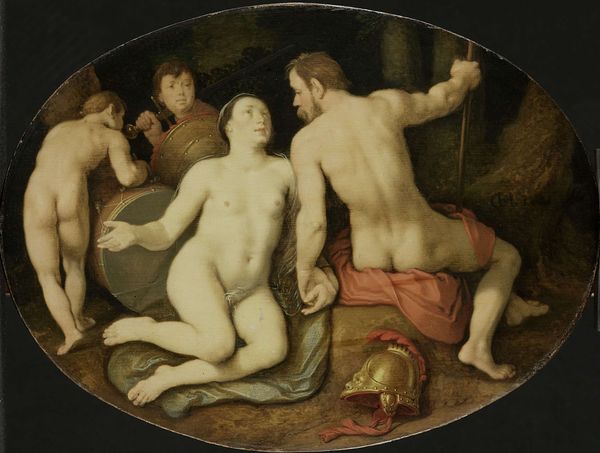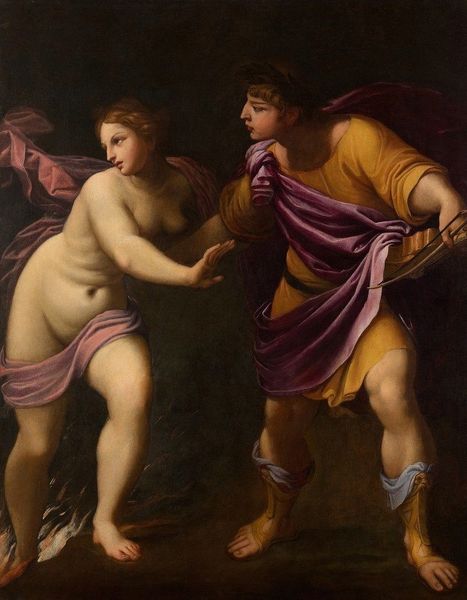
painting, oil-paint
#
allegory
#
painting
#
oil-paint
#
mannerism
#
figuration
#
history-painting
#
nude
Dimensions: 140 x 95 cm
Copyright: Public domain
Curator: Here we see Bartholomeus Spranger's oil painting, "Venus in Vulcan's Forge", completed around 1610. It's a fascinating Mannerist piece now held at the Kunsthistorisches Museum in Vienna. Editor: The immediate impression is one of theatrical tension, almost a forced artificiality in the figures' poses and complex relationships. The palette feels restrained but deliberate. Curator: Absolutely. Notice the emphasis on line and the slightly elongated forms characteristic of Mannerism. Venus, with her graceful contrapposto, dominates the composition, overseeing Vulcan's labour. The interplay of their bodies creates a complex, almost intertwined structure, accentuated by the drape of fabric. Editor: It’s interesting how Spranger portrays the process of production here. We see the muscular Vulcan actively engaged, seemingly in the process of creating armor or weaponry for his wife’s lover, Mars. It raises questions about his labor being exploited, and the inherent gendered dynamic, as the product of the "forge" enables destructive conflict, influenced and led by Venus. Curator: Yes, and consider the inclusion of Cupid, seemingly tampering with his arrows. Spranger cleverly employs allegory to comment on love, marriage, and the power dynamics within them. The overall composition pulls our eye around this arrangement between figures. It is visually arresting. Editor: What also captures me is the detailed rendering of the objects. Spranger lavishes attention not only on the idealized nude forms, but the armor, metal tools, and even a hanging skin or pelt within Vulcan's workspace—the trappings of craft and manufacture. What kind of metal or treatment do you think went into making Vulcan’s gear? The painting serves as a testament to the material knowledge that goes into craft. Curator: Certainly, the texture and detailing offer an anchor to ground the painting within an earthly experience. While formally sophisticated and complex in its figuration, the materiality does lend a kind of grounding quality to the painting. Editor: Looking closely, there’s also an undertone of irony, and Spranger's engagement with mythology brings up considerations of who is at the losing end. This visual depiction emphasizes the relationship between power, labour and even infidelity. Curator: Agreed. The way the artist manipulated forms allows for varied interpretations. I find something new each time I encounter it. Editor: Indeed. Reflecting on the painting from my perspective as an editor, what initially seemed to be a formal exercise opens up many social issues from centuries ago about labor and production to be examined more deeply today.
Comments
No comments
Be the first to comment and join the conversation on the ultimate creative platform.

